It's similar to a home that you can take on an overlanding trip
Looking at images of the Overland Expo’s GMC Sierra 2500 HD AT4X Ultimate Build, it appears large, but it's even more impressive when seen in person. Before any of the enhancements (which I'll discuss shortly), the nearly $90,000 2025 GMC 2500 HD AT4X is no small vehicle. It's a substantial truck, equipped with a strong 6.6-liter Duramax V8 diesel engine that delivers 470 horsepower, along with an impressive 975 lb-ft of torque. As a result, it's not surprising to learn that its maximum towing capacity is 18,000 pounds. The Ultimate Build isn't designed for towing, but it was carrying a significant load. A tall, 1,345-pound $49,945 slide-in truck camper from OEV Back Country was on the back, featuring a stove, table, pop-up roof, seating area, and a full-sized bed. So, when I was invited to the Overland Expo PNW event to drive this truck on the organizer's new off-road course specifically for the PNW event, I was understandably a bit nervous.
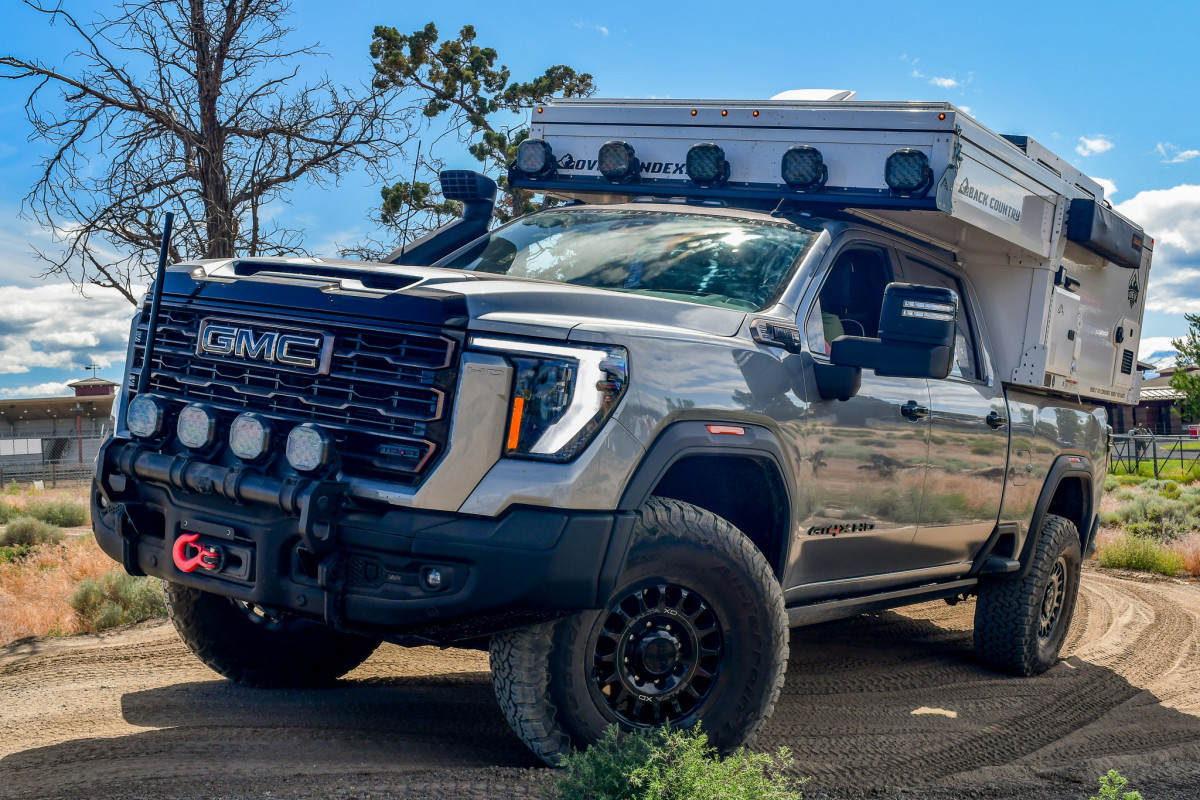
Prior to getting into the nearly luxurious driver's seat, I took the course in my Jeep to understand what to expect from a truck with a significantly larger size. It was a lot of fun. I was guided by Land Rover's Sarah Batton, the first female instructor in the company's Experience Land Rover program. I anticipated the truck would be challenging to handle, particularly due to the extra weight and modifications, but when I shifted into 4Lo and ventured onto the trail, I was surprised at how often I stopped thinking about the camper. It was far more stable, solid, and capable than I could have ever imagined.
But before anything else, let's discuss the modifications.
The Final Assembly, a promotional build created to generate enthusiasm for the Expo's activities and different retailers, will be sold through an auction following this year's Expo events. All funds raised will be directed back to the Expo, enabling the organizers to expand the events and attract more overlanders—both seasoned and new—to learn and discover. The vehicle was initially developed in Michigan, where American Expedition Vehicles (AEV) worked on enhancing its performance. The modifications include:
- Salta XD Wheels paired with 37” BFGoodrich All-Terrain KO2 tires
- AEV 37-inch tire clearance kit
- ComeUp SOLO 12.5rs winch, jointly developed with GM
- AEV Snorkel
- AEV Front Bumper Light Bar, featuring Vision X Explora Off-Road Lights
- Magnaflow steel exhaust
- Air Lift LoadLifter 5000 Pro suspension system
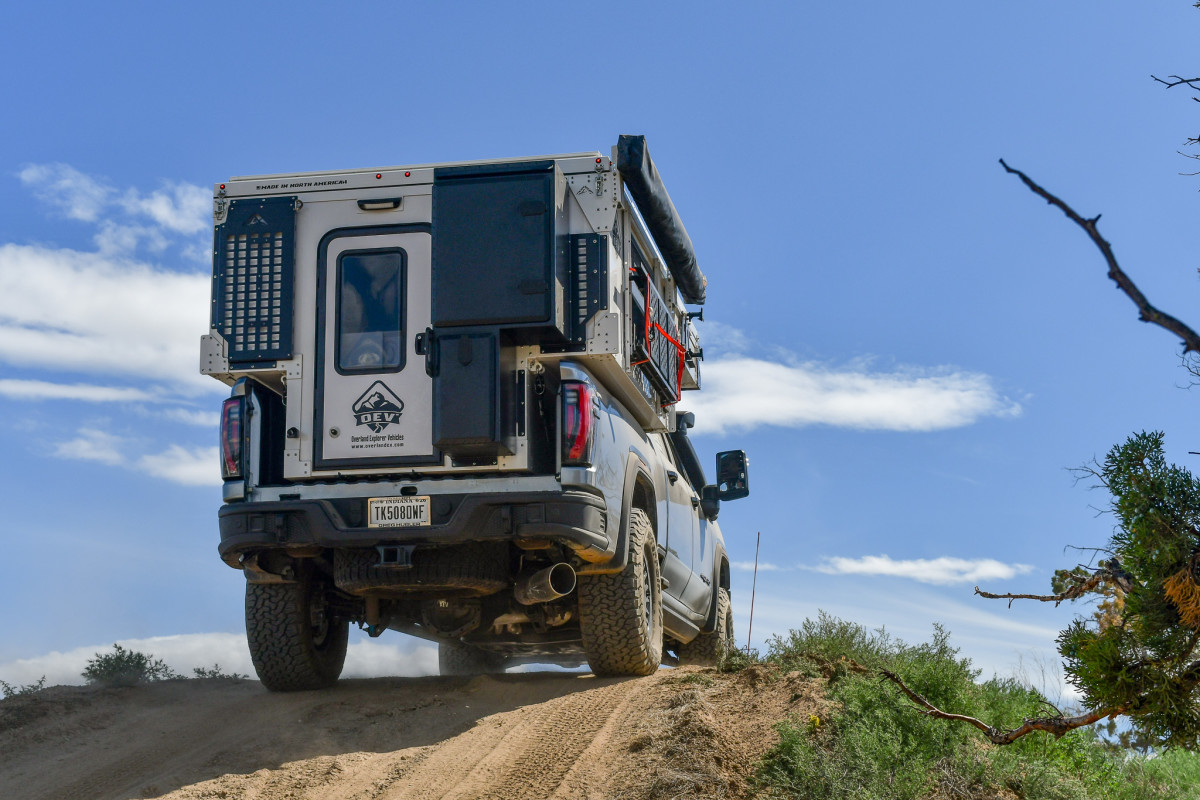
The insulated camper was subsequently installed by OEV Back Country, which features a water heating system, a 20-gallon water reservoir, a refrigerator, a shower unit, an inverter, and a retractable awning. It was the first thing that caught my attention when I saw the truck up close. I could easily imagine living out of the back of this vehicle, enjoying quiet camping in the most secluded areas. Southern California’s Tiny Rig equipped it with a range of customized monitoring systems to keep track of all the modifications, including:
- Trackform TRAXX system
- ONWRD seat back organizers
- Portable compressor and Rig Ready Systems Jackout HD kit
- Redzone wireless internet and Zoleo Satellite Communicator
My initial experience driving the Ultimate Build was extremely positive.
From the outside, the rig looks impressive. It's big and confident, and it's aware of that. When I got in to drive it, it didn't feel or appear as large as it seemed from the outside. Everything was straightforward to understand, locate, and use. The gear shift was a conventional column shifter rather than one on the center console, which reminded me of the old days. The digital instrument panel was bright, clear, and just as simple to get used to. I engaged the 4WD system into 4Lo by pressing a button and waited. Once it locked, I put the truck into first gear and moved forward. Considering the maybe two minutes it took for me to get familiar with it, I'd say it was one of the more user-friendly trucks.
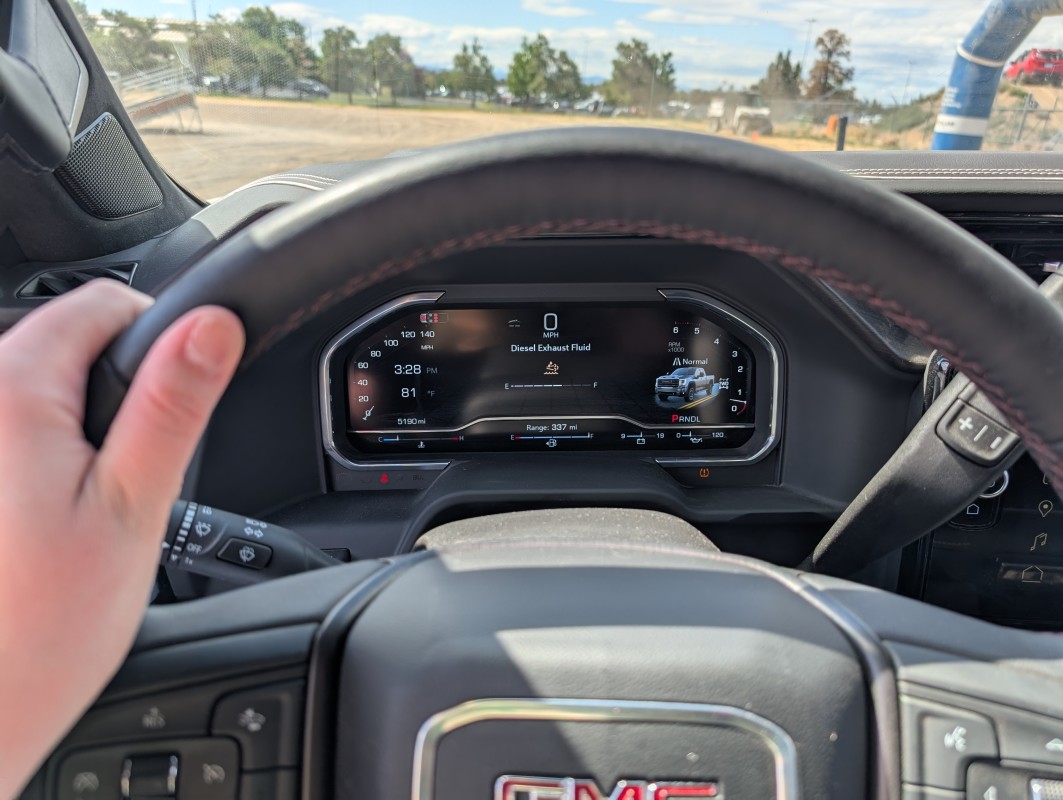
It was also simple to drive. The truck featured a crawl cruise control option, allowing me to set it as low as 3 mph and let the engine, brakes, and transmission handle everything while I focused on steering. But where's the excitement in that? I recalled Sarah's heel moving to manage the throttle, and I climbed the first hill. The GMC's hood was nearly a mile long and very high, so for a moment all I could see was the bright blue sky.
I had to use the off-road camera system, which was another feature that could be easily turned on with a button, and I saw that I needed to turn a bit more to the right to keep my tires on the path (thanks to the tire placement prediction feature). Descending the extremely steep hill, I was glad the truck was raised to enhance the bumper's approach angle. At its standard height, it would have definitely nosedived into the soft dirt.
The class soon became more demanding, although
Then came the articulation section, which is where I realized the truck was far more agile than I initially thought. Even with a very heavy load, the GMC easily handled the dips and bumps and moved smoothly, almost like a strong, off-road capable ballerina. After I completed that, I approached a steep off-camber incline. The path suddenly rose with the ground dropping away on both sides, meant to teach drivers about proper wheel positioning. In front of me was a specially modified 2025 Lexus LX 500h Overtrail, and watching the SUV slide sideways made me very anxious about the top-heavy GMC. I immediately imagined the expensive vehicle lying on its side, wheels spinning like a turtle turned upside down.
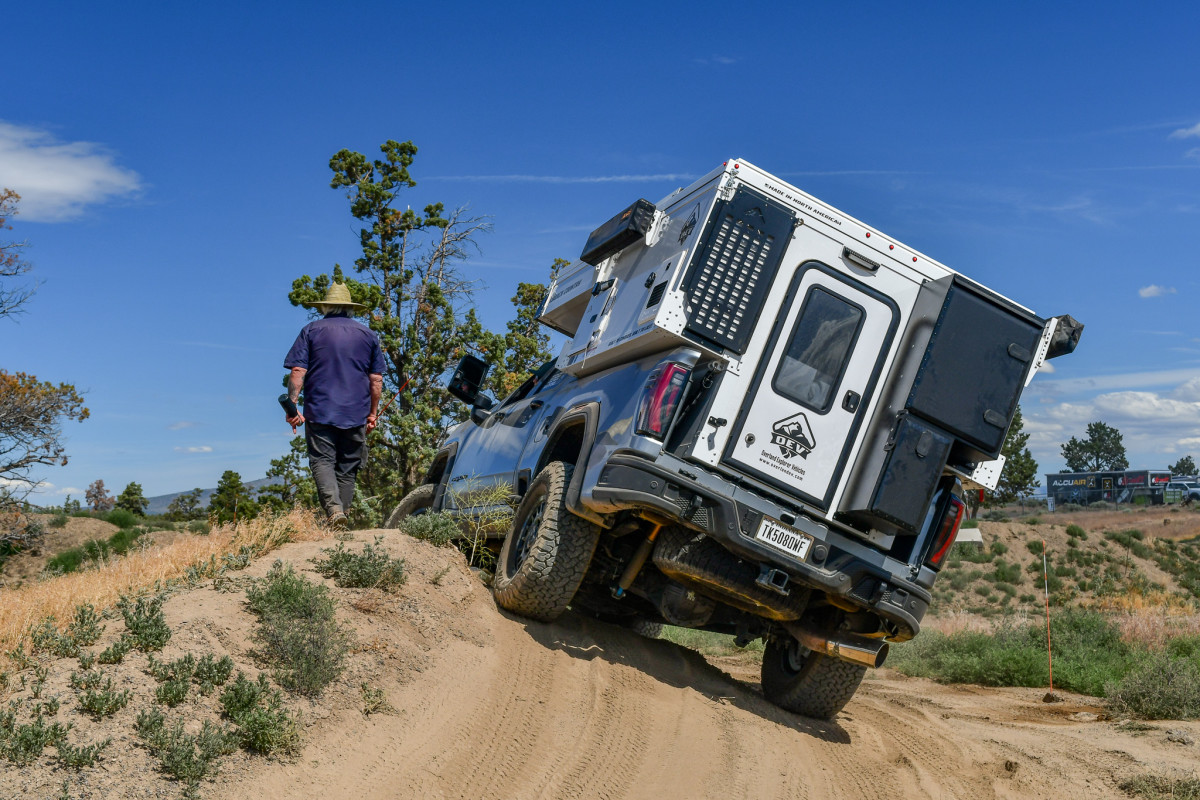
But it didn't. It ascended the slope without any issues. I had to navigate the turn differently than I did in my Jeep due to the significantly longer wheelbase and increased width, which took some time to adjust to, but the truck handled it with minimal effort. During the rock crawling part, the improved suspension and bigger tires devoured that section of the track. The only problem was that I kept forgetting about the camper because the truck was so smooth, and my co-driver constantly had to remind me to stay on the left to prevent scraping it against the trees.
Even some 4x4 trainers were keen to push the rig's boundaries.
As the course came to a close, it divided into two sections: on the left was a straightforward, flat slope. It was steep, but there were no obstacles to complicate things. On the right was a rugged, uneven terrain that needed someone to guide the way. My co-driver, Alli, told me, “I don’t think they’ll make us take this tough path; this truck is pretty large.” We were both surprised when the instructor told us to head to the right. We exchanged glances, raised our eyebrows, and moved to the right. Just like the other part of the course, it wasn't a problem for this truck. I followed the instructor's hand signals and easily navigated the challenging section in seconds, without feeling like our internal organs had been moved.
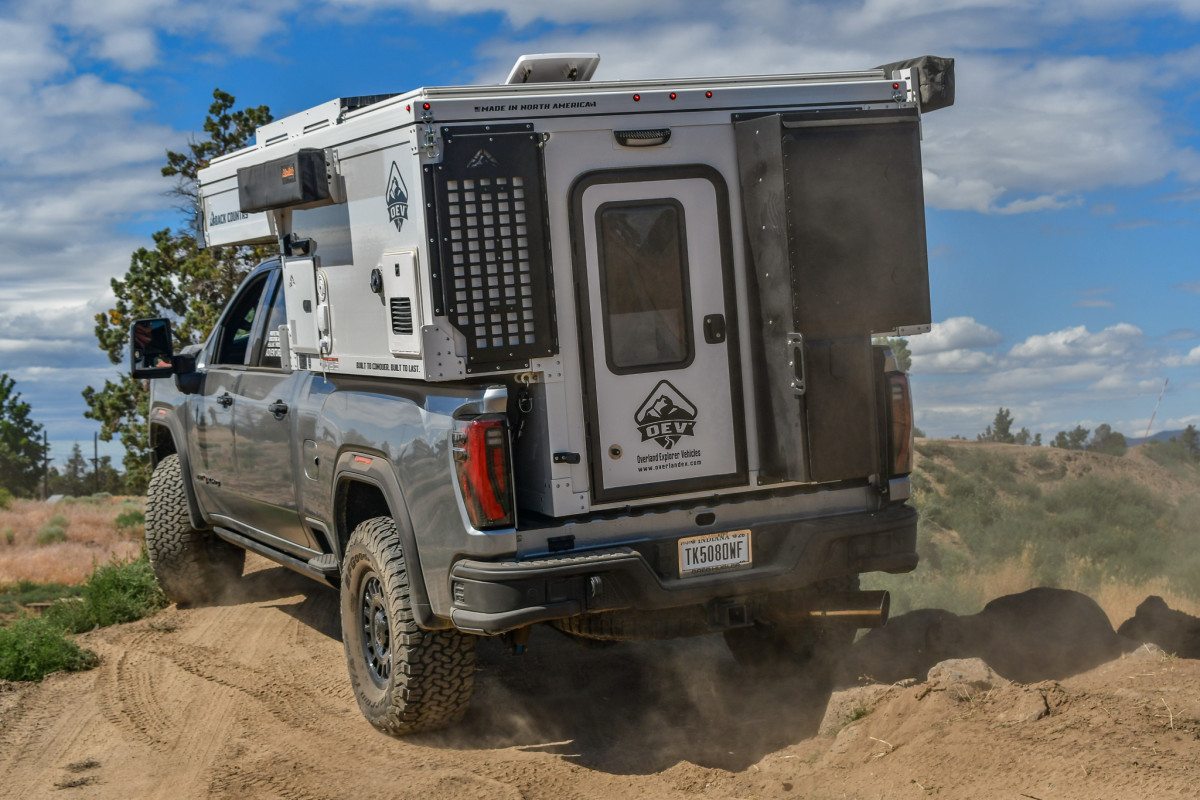
We ascended the last hill, tackled additional rocky areas to refine throttle control and tire positioning, navigated a steep descent, and then left the course. In total, it took roughly 15 minutes, and each moment seemed to stretch into an eternity, yet it was an incredible experience. After completing the course in my Jeep, I felt much more connected to my TJ and departed as a more self-assured driver.
Final thoughts
I expected driving a truck as big as a small village to be much more difficult. However, modern technology, a strong engine, modifications that enhanced its performance, and a wealth of instructors helped me understand that the GMC 2500 HD AT4X wasmade To address challenges such as those I faced on the Overland Expo PNW's off-road track. Engineers probably evaluated these trucks on comparable or more demanding obstacles to enhance the AT4X's performance.
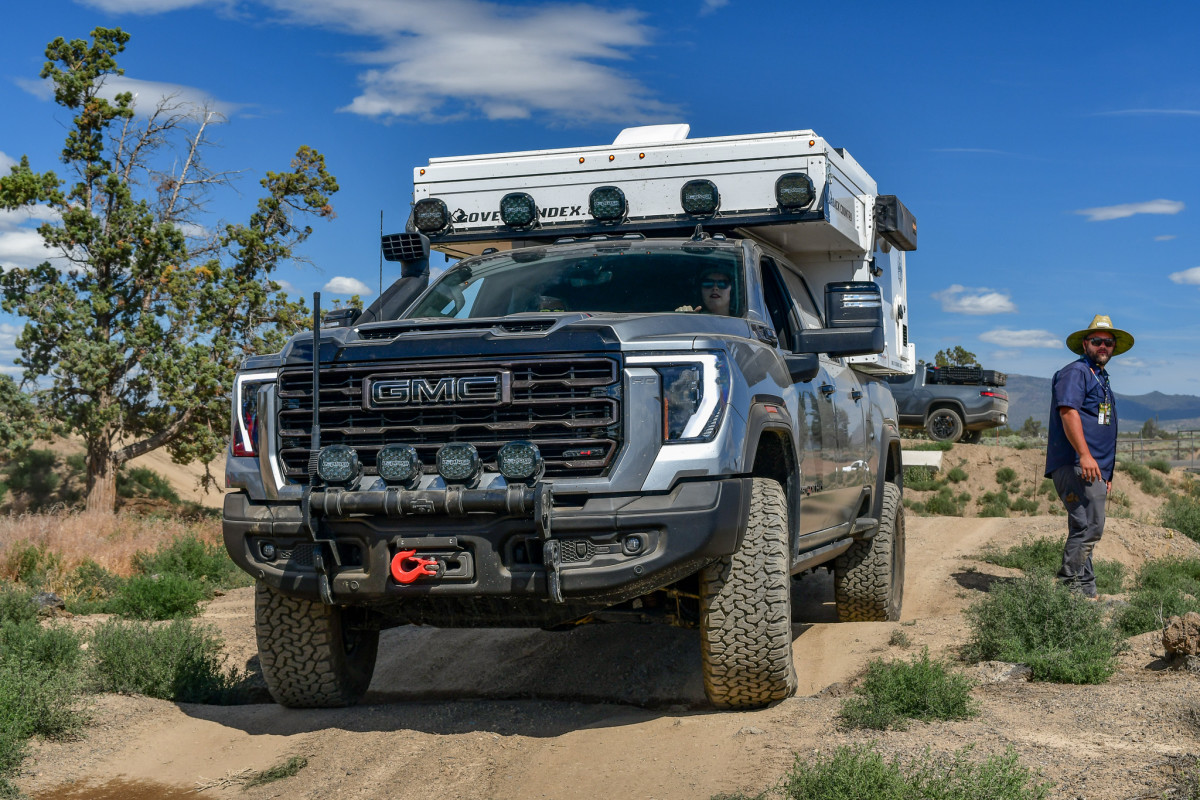
The course costs an additional $75 on top of the event's ticket price and spans two days. On the first day, participants attend a full-day session led by certified and knowledgeable 4x4 instructors who cover essential topics such as safe winch usage, when to use a winch, the distinctions between transfer case speeds, and when each speed should be applied, among other important details. The second day involves driving on the course using your own off-road vehicle, with an instructor present at every stage to guide you on proper turning techniques, gear selection, and more. This is an excellent opportunity to familiarize yourself with your vehicle's capabilities before potentially causing damage in real-world conditions. In my view, the $75 fee is well worth it.


No comments:
Post a Comment